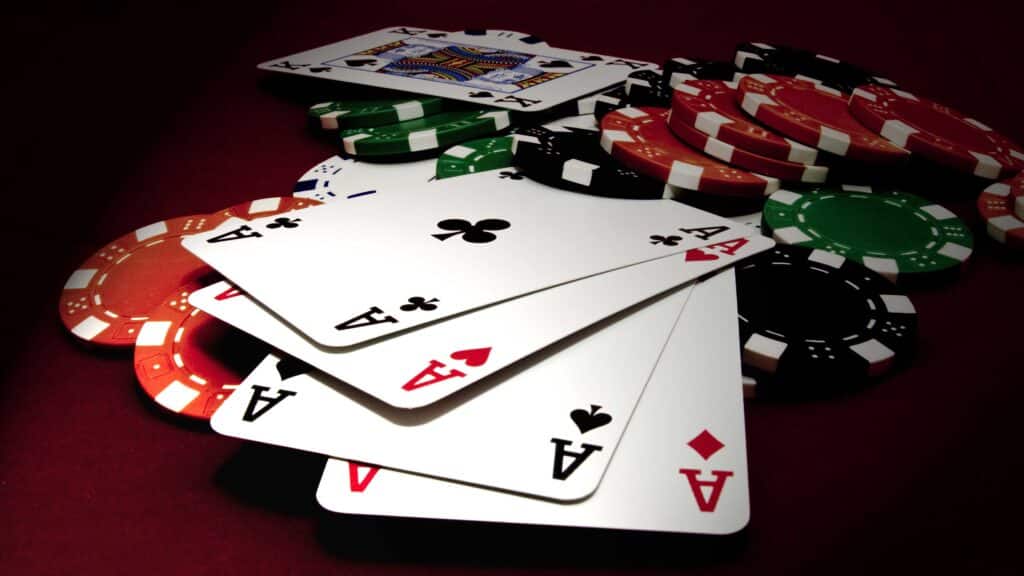Bluffing is an essential skill in poker, but it’s more than just a trick to catch your opponents off guard. When done correctly, bluffing can be a powerful weapon in your online poker arsenal. However, advanced bluffing goes beyond the simple "bet big with a weak hand" strategy. In this comprehensive guide, we'll explore advanced bluffing techniques used by top poker players and show you how to apply these strategies in your own game. Whether you’re a seasoned player or just starting out, mastering these advanced techniques can significantly improve your poker results.
Understanding the Importance of Bluffing in Online Poker
Bluffing is often considered the heart of poker strategy, especially in games like Texas Hold'em and Omaha. The ability to bluff successfully can make the difference between winning and losing, as it allows you to make your opponents fold, even when your hand is not as strong as theirs. However, bluffing is a nuanced skill that requires careful consideration of timing, the players at the table, and the specific circumstances of the hand.
While many novice players rely on aggressive betting with weak hands, advanced bluffing techniques require an understanding of psychology, position, and game dynamics. Let's dive into the advanced bluffing strategies that can elevate your game.
Advanced Bluffing Techniques
1. Semi-Bluffing: Bluff with a Drawing Hand
Semi-bluffing is a more advanced form of bluffing where you bet or raise with a hand that is not currently the best, but has the potential to improve by the river. This technique allows you to apply pressure on your opponents while still giving you a chance to win if your draw completes.
Example: Suppose you are holding a flush draw on the turn, and you bet aggressively. If your opponent folds, you win the pot. If your opponent calls or raises, you still have the opportunity to hit your flush on the river and win the hand.
When using semi-bluffing, it's important to consider factors like pot odds and implied odds. Pot odds will help you determine whether your potential draw is worth pursuing, while implied odds will help you estimate how much you can expect to win if you hit your hand. Semi-bluffing works best when you have good equity in the hand but need to create fold equity with your bet.
2. Bluffing in Position: Use Your Position to Your Advantage
One of the most important aspects of poker is position, and understanding how to leverage your position can make a huge difference in your bluffing strategy. When you’re in a late position (closer to the dealer button), you have more information about your opponents' actions, which gives you a better chance to successfully bluff.
Bluffing in position allows you to control the pace of the hand and put pressure on opponents. In a late position, you can make aggressive bets or raises with a weak hand, knowing that you can fold if your opponent raises back. This tactic is particularly effective when you’re up against opponents who are more passive and likely to fold to pressure.
Example: You’re on the button with a hand like 7♠ 3♣. The player in the cutoff checks, and the player in the small blind folds. You decide to raise to steal the blinds, knowing that the players in the blinds are unlikely to call with weak hands. The late position bluff puts you in a favorable spot to win the pot uncontested.
3. The Continuation Bet (C-Bet): Bluffing Post-Flop
The continuation bet (or C-bet) is a fundamental poker tactic where you make a bet on the flop, even if you didn’t improve your hand. The C-bet works well when you have a strong pre-flop hand and want to continue putting pressure on your opponents, forcing them to fold if they have weak hands.
Advanced players use C-bets as a bluffing tool, even when they miss the flop. The key is to consider the texture of the board. For example, if the board is dry (e.g., 2♣ 7♠ J♦), your opponents are less likely to have hit a strong hand, making them more vulnerable to your bluff. However, if the board is coordinated (e.g., 8♠ 9♠ 10♦), your opponents may have strong draws or made hands, and bluffing could backfire.
Example: You raise pre-flop with A♠ K♦ and the flop comes 4♠ 8♣ Q♦. Although you missed the flop, you could still make a C-bet to represent a strong hand like top pair or an overpair. If your opponent has a weaker hand or a draw, they may fold, allowing you to take the pot uncontested.
4. The Donk Bet Bluff: Trap Your Opponents Early
A donk bet is a term used to describe when a player bets into the aggressor in the pot, typically in an unexpected situation. While donk betting is usually seen as a defensive move, it can also be used as an advanced bluff to catch your opponent off guard.
When you donk bet, you’re taking control of the pot by betting before your opponent can act. This can force them to reconsider their hand and potentially fold. However, donk betting requires careful timing and an understanding of your opponent’s tendencies. It works best when you’re in a favorable position and can represent a strong hand without giving away too much information.
Example: You’re holding J♦ 10♠ on a flop of Q♠ 6♣ 8♦, which gives you a straight. Instead of checking, you decide to make a donk bet. Your opponent may interpret this as you having a strong hand, and they might raise, allowing you to re-raise with your straight. By donk betting, you control the action and set a trap for your opponent.
5. The Overbet Bluff: Make Your Opponents Fear You
Overbetting is an aggressive bluffing tactic where you bet more than the pot size to put maximum pressure on your opponents. This strategy is most effective when your opponent has a limited range of hands that they can call with. By overbetting, you can force them to make a tough decision, making it more likely they’ll fold weaker hands.
However, overbetting is a high-risk strategy, as it can also alert your opponents to the fact that you might be bluffing. To use this technique effectively, you need to have a good read on your opponents and be able to balance your bluffs with value bets.
Example: You’re holding 7♣ 5♠ and the board shows 6♦ 8♠ 9♣, giving you a straight. Your opponent checks, and you decide to overbet the pot with a large wager. This move could convince your opponent to fold any marginal hands, giving you the pot uncontested.
6. Bluffing with History: Use Your Table Image
Advanced players know that bluffing is not just about the cards in your hand, but also about the story you tell through your betting patterns. Your table image plays a significant role in how your opponents perceive your bluffs. If you’ve been playing tight and conservative, your opponents are more likely to give you credit for a strong hand when you make a big bet. On the other hand, if you’ve been aggressive and showing down weak hands, your bluffs may be called more often.
To use your table image to your advantage, you need to mix up your play and balance your bluffs with solid hands. If you’ve been playing a tight strategy, you can exploit this image by making large bluffs with weak hands, knowing your opponents are likely to fold. If you've been bluffing too often, you may need to tighten up your play and only bluff with stronger hands to regain your opponents' respect.
When to Bluff and When to Fold
Knowing when to bluff and when to fold is just as important as the bluffing technique itself. If you bluff too often, you risk losing credibility at the table. If you never bluff, your opponents will quickly pick up on this and only call when they have strong hands. The key is to balance your bluffs with value bets, and always assess the situation carefully before deciding to bluff.
Here are some key factors to consider before bluffing:
- Your opponents: Are they tight or loose players? Tight players are more likely to fold, while loose players are more likely to call.
- The board texture: Does the board favor strong hands or draws? Bluffing on a dry board is more likely to succeed than bluffing on a coordinated board.
- Your table image: What is your reputation at the table? Are you seen as a loose player or a tight player?
Conclusion: Mastering Advanced Bluffing Techniques
Bluffing is a complex but rewarding strategy that can make you a formidable player at the online poker table. By mastering advanced techniques such as semi-bluffing, continuation betting, donk betting, and overbetting, you can keep your opponents guessing and gain an edge over them. Remember, bluffing should be used strategically and in the right situations—bluff too often, and your opponents will catch on. Use these advanced bluffing techniques to increase your chances of success and dominate your opponents at the virtual poker table!



